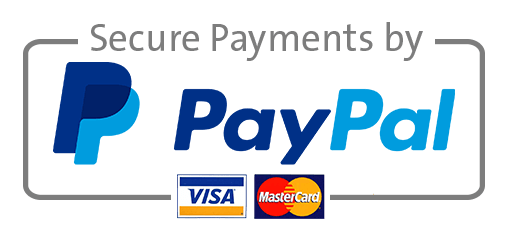Please replies with 200 words each one
1. In the present discussion, I analyzed a quantitative research that can result in conclusions that can influence the nursing field to improve clinical practice and patient outcomes.
The nursing research article I chose is named “The Proportion of Medication Error Reporting and Associated Factors among Nurses: A Cross-sectional Study”. I chose this research, as handling, preparing, and providing medications is one of the most important tasks that Nurses have in everyday practice. Medication error consequences can vary from zero consequences at all to causing death to a patient. Many research studies state that about 5% of the medication errors have fatal consequences, but about 50% of the total cases are preventable, so it is crucial to analyze and understand which are the main errors happening, which factors are influencing those errors to happen, which are the most common consequences, and lastly, it is also important to determine what’s the reporting rate, why are many medication error cases not being reported, which factors are influencing the fact of not reporting and what can be done to enhance the nursing personnel to report medication errors to help to analyze the problematic and, in consequence, to improve quality healthcare and patient outcomes. This quantitative study was developed in several countries, counting with a total universe of 597 professional nurses, who were interviewed by answering questionnaires, including variables related with factors that have been described as the most common medication errors, establishing a comparison with a previous pilot study. Although quantitative data results can vary from a hospital or from a country to another, this research concluded that the medication error report proportion was of 57.4%. Among the factors that influenced reporting medication errors, the research concluded some data that replicate in a similar way compared to studies from other countries. Factors as female professionals, married and experienced nurses resulted in the professionals that mostly report medication errors. In addition, the article shows a consistent percentage of 69.8% as the percentage of professional nurses that consider that medication errors should be reported. However, the article also points that the factors that lead in non reporting medication errors were mainly seen in female nurses who had fear of the reaction of other nurses, supervisor or even their manager.
In conclusion the research article recommends that the health authorities should identify and address the medication errors and enhance the nursing professionals to report these cases to improve patient safety and outcomes. In addition, it is encouraged that the health care facilities should create a more supportive and trustable environment to the professionals to decrease their fear to report. In consequence, this would allow the Nurses to report the cases with the goal of improving patients safety and improve patients outcomes.
2. In a captivating qualitative research study, nursing students were evaluated for their holistic nursing clinical experiences in medical-surgical clinics. Holistic care is not a new concept in nursing. In fact, many nursing educational institutes have successfully incorporated holistic care into their curriculum. Holistic care involves a multifaceted approach in patient-centered care by considering the physiological, psychological, psychosocial dimensions of an individual’s overall health. These several factors must be balanced within the body in order to achieve optimal health conditions and prevent disease. The nurse’s role in holistic medicine is to formulate care plan interventions that address the various dimensions of holistic care that is tailored to the patient’s needs (Kaya et. al, 2022).
The researchers gathered 20 nursing students to undergo three semi-structured focus group interviews that encouraged participants to share their clinical experiences during their time in nursing school. After the answers to the open-ended questions were collected, a thematic analysis of identifying themes and subthemes were laid out into a coding tree. The research data demonstrated several themes and subthemes related to the participants’ experience of holistic nursing clinical practices. Many participants conveyed a lack of knowledge about holistic care and effective communication with patients (Kaya et. al, 2022). Several student nurses admitted to maintaining focus on well-being and upholding an emotional barrier with patients, specifically those with terminal illnesses. This lack of knowledge and emotional disconnect can impede the delivery of holistic care. In addition, the research findings also noted the effects experienced by nurses especially when caring for patients in the stages of illness. Nurses often bear the burden of their patients, which can impact their own wellbeing (Kaya et. al, 2022). While it might be challenging for them to discuss with their families the difficulties they encounter while providing care, stress management and therapeutic communication is a skill that is honed after repetitive practice in similar circumstances. The nursing students believed that holistic care involved a team-based approach including healthcare professionals from various disciplines to deliver effective care. It was determined that although there is constant communication and sharing of information among healthcare providers, it can impede the assessment of patients from a holistic perspective (Kaya et. al, 2022).
The holistic care framework guides nurses to look at patients beyond just their physical health, but also include their psychosocial, cultural, and spiritual needs. Addressing and treating these aspects can significantly impact the quality of care delivered and may even prevent recurrent hospitalizations. There were several obstacles to providing holistic care such as an emphasis on physical wellbeing, a lack of role model nurses, inadequate knowledge, limited understanding of teamwork across disciplines, and a shortage of nursing staff and difficulties related to the curriculum (Kaya et. al, 2022). These challenges hindered the assessment of patients by restricting the amount of time that should be dedicated to personalized care. The implications of these research findings provides insight into the concept of care that is a core philosophy of nursing. Future research can consider these findings to develop courses that emphasize on holistic care and provide appropriate interventions. As a result, this can enhance the learning experiences of nursing students and evolve learning habits of newer nursing generations to deliver high-quality care.

